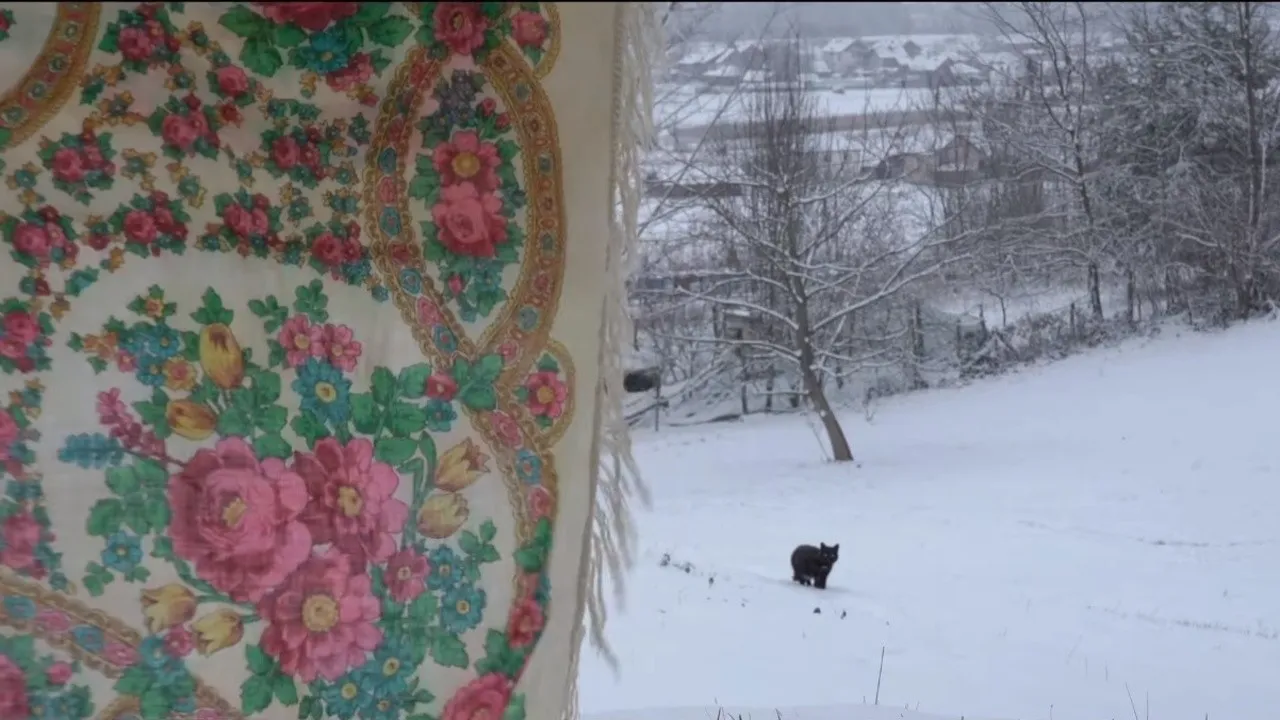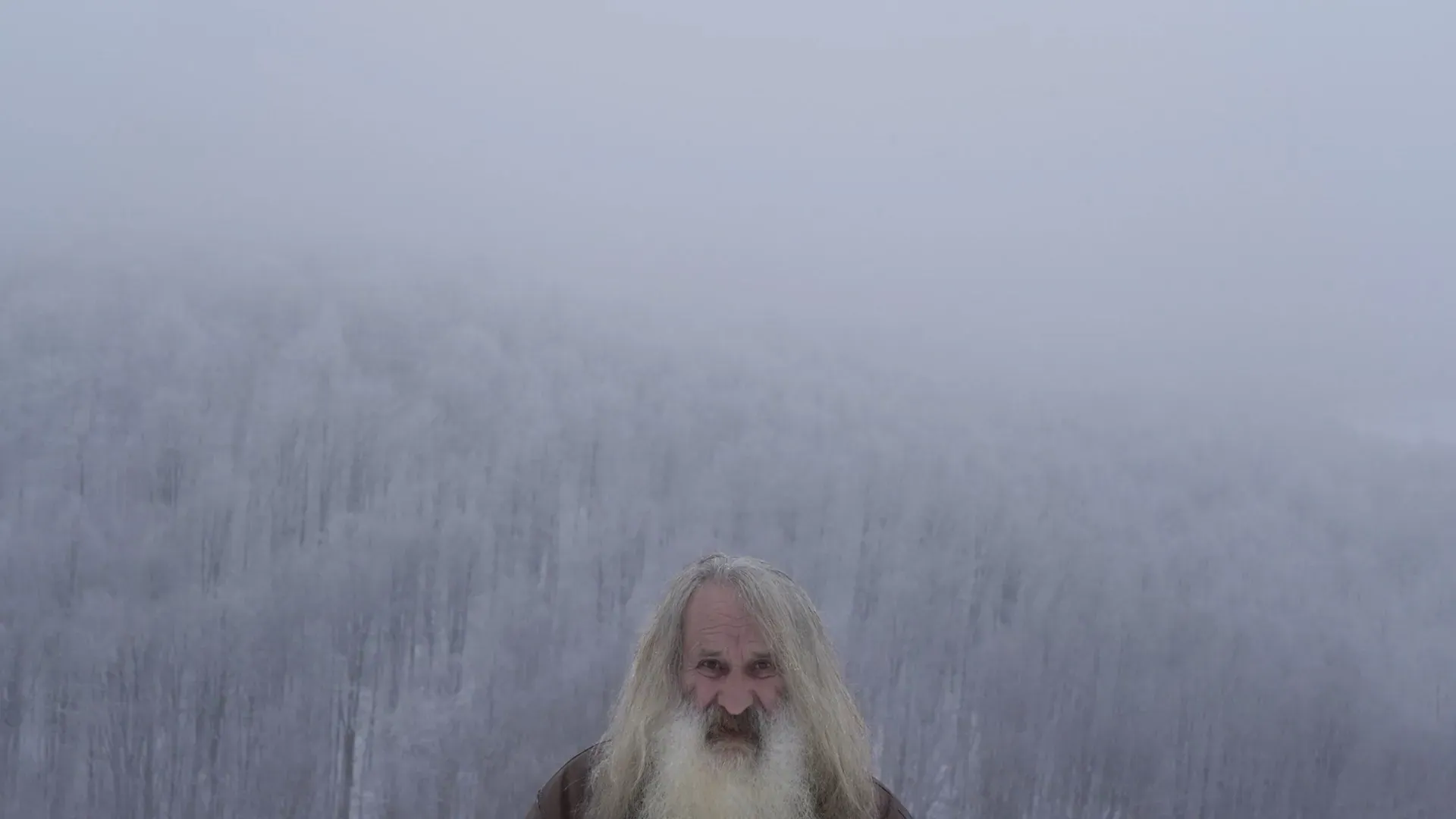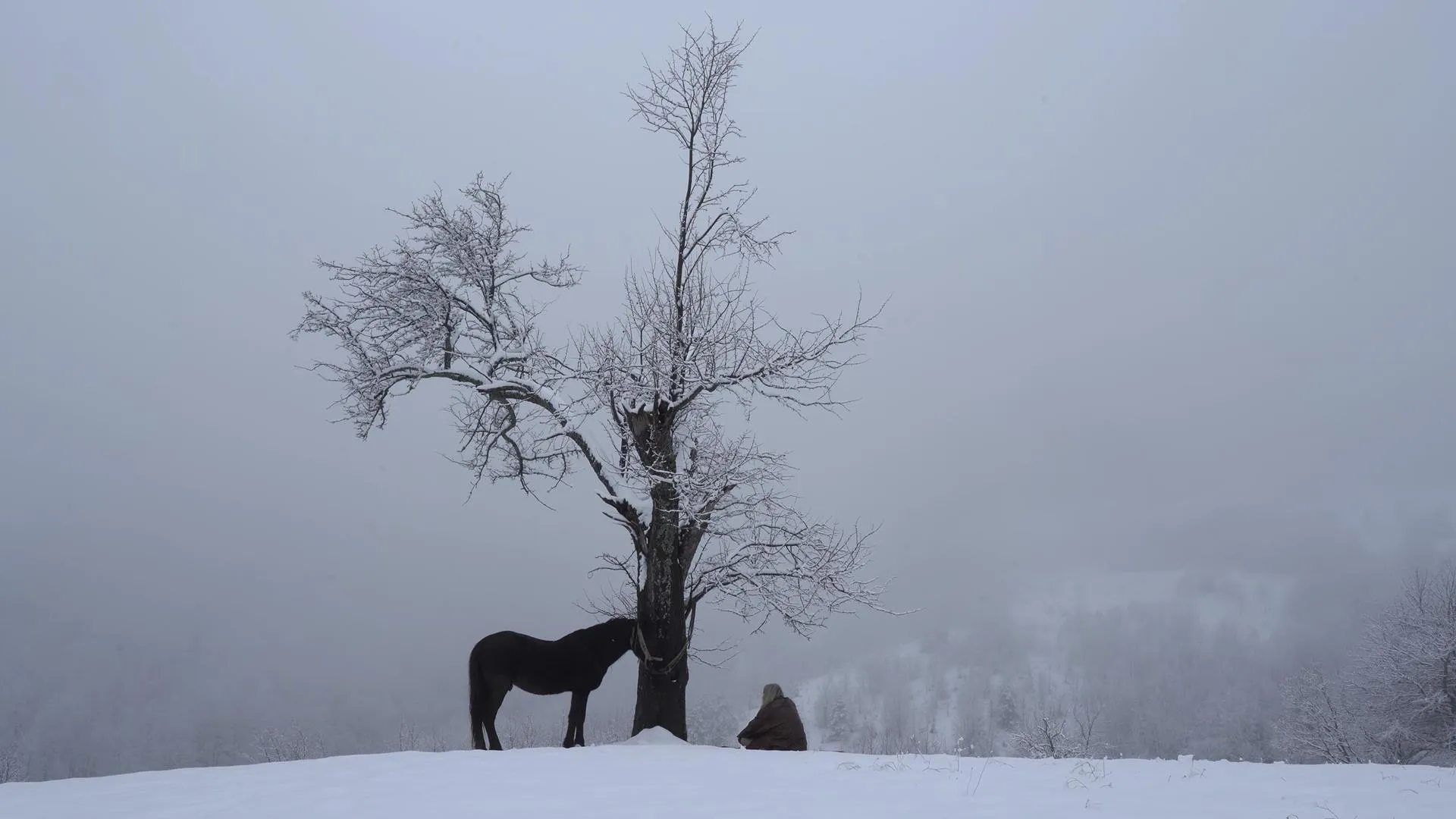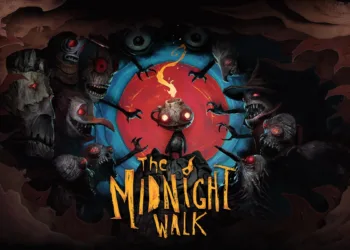Maja Novaković’s directorial debut, At the Door of the House, Who Will Come Knocking, offers a glimpse into a solitary life. Released in 2024, the film transports viewers to the wilds of rural Bosnia and Herzegovina. There, in a remote mountain dwelling, we find Emin Bektic, an elderly man living alone in isolation.
Presented in a hybrid style blending documentary realism with elements of fantasy, the movie observes Emin’s daily routines against the backdrop of the stark yet striking landscape.
Novaković’s immersive approach, diligently capturing mundane moments with observational care, invites us into Emin’s world. As the seasons change from winter to summer, she gradually reveals deeper layers of meaning. A more imagined emotional realm emerges alongside the documented realities.
Audiences have connected with the soulfulness of Emin’s remote existence, portrayed with empathy and care by Novaković’s discreet, subtle direction. Winning awards at film festivals such as Sarajevo and Sheffield DocFest, the movie has attracted critical acclaim for its inventive hybrid format and engagement with universal human themes.
Solitude and Company
At the center of At the Door of the House is Emin Bektic, a solitary figure living apart from society in the remote mountains. Now well into his seventies, he resides in a rustic wooden dwelling, accompanied solely by his loyal horse.
We learn snippets of Emin’s past—he once worked in a mine in Germany and hasn’t cut his hair since his barber brother’s tragic death decades prior. His aged appearance, with full beard and flowing locks, gives him a wild, almost otherworldly air befitting the wintry wilderness surrounding his domain.
Though alone, Emin maintains ties to the outside. He assists a village neighbor with tasks like chopping firewood, revealing snippets of conversation that showcase his yearning for engagement. These brief social calls only serve to emphasize his customary solitude, however. Beyond these sporadic contacts, Emin’s sole companions are the animals that inhabit the hills—most notably his trusted steed, with whom the old man shares private ponderings on their shared bond.
Novaković’s delicate direction ensures we intimately observe each subtle facet of Emin’s lonely routines. From lighting fires to hauling water, his daily rituals take on an elevated poetry against the natural backdrop. Her gaze acknowledges both his independence and underlying isolation beneath the veneer of self-sufficiency. As seasons change, bringing hints of new life, we glimpse how Emin’s removal from family and community colors his perspective, leaving an echo of past relationships and what reconnects him to humanity.
Mysterious child apparitions also feature, seemingly drawing from Emin’s inner reflections. We can’t be certain if they represent memory, imagination, or something more mystical. But their inclusion highlights how solitude may breed imagination as one reflects on relationships and reminisces about past bonds. The elusiveness of these specters epitomizes At the Door of the House’s blend of reality and introspection.
The Landscape as Protagonist
At the Door of the House is as much a film about its rugged natural setting as it is about Emin himself. The harshly beautiful mountains, forests, and frozen terrain that encircle Emin’s home imbue the story with sweeping scale and environmental texture. Dominated by snow during winter, Novaković’s photography presents a blank, surreal canvas upon which Emin’s diminutive figure is framed. His solitary place within this expanse underscores his withdrawn state.
With elegant camerawork that places us beside Emin yet remains discreetly unobtrusive, Novaković allows the landscape to reflect her subject’s internal geography. Subtle play with light and shadows accentuates the desolation, casting Emin as a figure toughened but weighed by isolation. Gradually, seasonal color returns as new growth challenges the persistent whiteness—an analogy for Emin opening amid his loneliness.
Novaković’s gift lies in harnessing the natural drama to enhance emotional nuance. Macro shots highlight texture in Emin’s daily activities, while wide-establishing shots contextualize him as a passive observer rather than a shaper of his domain. Her patience and compositional eye impart an artistic sensibility, echoing painting’s capacity for encoded introspection. The director filters Emin’s perspective and journeys through memory through the medium of their shared terrain.
At the Door of the House is as much a portrait of one man as it is a topographical memoir. Novaković celebrates nature’s majesty while using it as a tool to unveil inner terrains just as mysterious yet ripe with poetic signs for those who linger with care, like Emin, within its grasp.
Blending Reality and Imagination
At the Door of the House takes an unconventional approach, blending documentary and fiction into a style all its own. There’s no straightforward plot—instead, Novaković focuses us on Emin’s quiet routines, leaving space to absorb his world. Save brief exchanges; dialogue is scarce. But a story emerges organically through observant details and the landscape’s moods.
Initially portraying Emin’s winter realities, the film gradually introduces surreal tones. Strange apparitions appear as the seasons turn, hinting at inner facets beneath surface isolation. Color shifts signal rebirth that mirror Emin’s reluctant openness. Are these symbols or visions woven from solitude? Novaković offers no answers, respecting our capacity to interpret signs through Emin’s eyes.
Her minimalism rewards patience, slowly immersing us in Emin’s perspective until reality and memory blur. Loose, unscripted scenes give the feeling of accompanying Emin rather than passively watching from outside, inviting empathy for his withdrawn state. Though deliberate in pace, Novaković’s discretion fosters active engagement rather than passive consumption as meanings emerge from sparse clues.
Blending fiction’s symbolism with documentary’s authenticity, At the Door of the House challenges preset notions of either genre. Novaković trusts that lingering with her subject will unveil deeper truths just beyond facts’ surface and that audiences can appreciate fragile realities enhanced, not replaced, by dreamlike intimations of inner terrains we all struggle to understand in ourselves and others. Her style awakens imagination as much as observation.
Threads of Connection
Emin’s solitary life is peppered with hints of separation’s wear. Yet At the Door of the House sees beyond surface isolation to stir deeper recognition. Novaković infuses ordinary moments with meaning, letting loneliness and memory’s intimate hold on the elderly man slowly emanate.
We glimpse family imprinted on Emin’s walls, knowing glances at faded photos imply former closeness now clouded by time. Nature provides steadfast company, but fleeting interactions leave Emin’s cravings for companionship evident. Novaković treats such private longing tenderly, without intrusion, conveying solitude’s afflictions with compassion.
As seasons turn and curtains part to unfurl vistas of Emin’s mind, mysteries emerge. Strange apparitions float through forests as carriers of recollection or spirit—their mysticism doesn’t solve but sparks imagination. Do they portray the internal companion loners forge or symbolize faded ties’ resilience? Novaković leaves room for interpretation.
Her vision considers reflections on home and place. Emin’s remote refuge shelters reminiscence of all welcomed within its walls. His landscape refuge incarnates dwelling’s power to nestle memory, sheltering inner realms just as its wood and stone fortify against outer solitude.
Through minute observation of one man’s experience, At the Door of the House breathes life into profound musings on connections that sustain us, seen and unseen lines binding individuals across time. It appreciates how deeply homes, and the hearts of those who inhabit them, can continue sheltering beloved phantoms long after their physical passing.
Artistry in Atmosphere
Novaković demonstrates commanding artistry through technical prowess. As a cinematographer, she gifts gorgeous glimpses of Emin’s mountain domain with painterly instincts. Shifts in shadows and light tell as much story as images themselves.
The score by Luka Barajević works magic, using minimal string and woodwind melodies to lift mood. Its delicate strains mirror Emin’s inner tides, bringing the human element that words lack. Sound design immerses us fully in Emin’s rhythms and silences, from his fire’s crackle to horses’ clip-clops in snow.
Art also inspires art. Novaković’s compositions elegantly reference renowned works like Van Gogh’s portraits of anguish. She translated their profundity into her own vernacular, visualizing philosophical ideas as tangibly as landscapes. Emin sits pensively before a fire just as Memory’s subjects once did, decades distilling in each image.
Through technical mastery, At the Door of the House transforms ordinary subjects into poetry. Details breathe with spirit, revealing the director’s ability to uncover deeply layered realities lurking just under surfaces. Novaković implants imagination and meaning through subtleties, trusting creative vision and audience sensitivity alike. Her deft multi-skilling achieves perfect synchronization of form and content.
A Poetic Glimpse of the Human Spirit
At the Door of the House unravels its mysteries in mesmeric, minimalist fashion, leaving impressions that linger long after its final frames. Novaković trusts images alone can speak—and speaks they do—of solitude’s subtleties, memory’s enduring grip, and the landscape’s capacity to mirror the soul.
Through observing one man’s quiet daily rituals and solitary interior reflections, she crafts not just a portrait of isolated rural life but a meditation on existence’s ephemeral yet profound realities. Her stylish hybridization of documentary and dream summons a bygone era’s ambiance while keeping ponderings on human connections universally resonant.
This hypnotic character study will linger in arthouse circles, captivating those drawn to nuanced, visually poetic portraiture. Novaković takes risks by stripping back reliance on dialogue or narrative handholding, believing deeply in her ability and audiences’ willingness to absorb atmosphere and meaning simultaneously. Her faith proves well-founded.
At the Door of the House presents a unique brand of cinematic intimacy. It invites absorbing another’s perspective at their own thoughtful pace, uncovering layers of empathy, memory, and the resilient human spirit beneath outward solitude. Novaković’s debut marks her as a director attuned to cinema’s potential to unveil delicately shining glimpses of the intangibly profound.
The Review
At the Door of the House, Who Will Come Knocking Review
A meditative portraiture of the subtle inner workings of isolation, memory, and place, At the Door of the House crafts a hypnotic character study through a balanced blend of observational realism and psychological abstraction. Director Maja Novaković demonstrates a mature vision in her debut, conveying profound insights into the human experience with understated elegance and trust in her audience's ability to absorb atmospheres and meanings in equal measure.
PROS
- Compelling lead performance from Emin Bektic that feels authentic rather than acted
- Evocative sense of place through the cinematography and use of location
- Subtle and nuanced exploration of themes like isolation, memory, and the passage of time
- Unique hybrid style that blends documentary realism with moments of surreal symbolism
- A minimalist approach allows viewers space for subjective interpretation.
CONS
- May feel slow-paced and introspective for some viewers seeking a stronger plot.
- Symbolism and dream sequences could be perceived as unnecessary by some.
- Limited dialogue and context may leave some questions unanswered.





















































